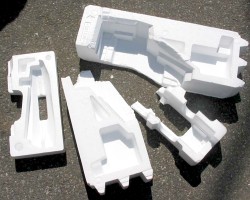 Expanded polystyrene, the moulded white shapes you get as protective packaging when you buy electronics or large toys etc, is a pain to recycle – it can be recycled now but not many places collect it.
Expanded polystyrene, the moulded white shapes you get as protective packaging when you buy electronics or large toys etc, is a pain to recycle – it can be recycled now but not many places collect it.
Unlike its foam ‘peanuts’ counterpart which can be reused as multi-purpose packaging again and again, the moulded stuff only really fits around the item you got it with — but there are still some fantastic ways to reuse it.
1. Crocks in plant pots
Chunks of expanded polystyrene foam make great crocks for plant pots – particularly large tubs filled with shallow rooted plants. The light foam fills the space rather than heavy soil, making it easier to move around and it helps with drainage too.
Those worried about plastic chemical leaching may want to avoid using it when growing fruit or veg in containers though.
2. Use it to make artwork or to mount pictures on walls
Waste expanded polystyrene can be used to make fun artwork – it can be used as a core for sculptures or models.
Flatter sections can be used like poster board/foam core to mount pictures, photos or posters on walls – the resulting picture is rigid (so won’t curl) but light.
Deeper pieces of the foam can be used to make blocky canvas-style wall art – mount your picture so that it run around the edges, covering the foam sides. If you haven’t got a single piece of polystyrene that’s big enough, make a strong frame from lengths of it instead.
3. Floating bath pillow or bath toys for kids
Pick a reasonably smooth piece of expanded polystyrene and cover it with a quick drying fabric – thin cotton or an old swim suit perhaps – to use it as a floating pillow in the bath.
Or cover smaller, interesting shapes with fun fabric to make floating toys for kids.
4. Use it to make costumes
As it’s light, bulky and reasonably easy to modify, it’s perfect for turning into Halloween or fancy dress costumes where you want to be bulkier – or more robotic/mechanical – than you currently are.
5. Use it for insulation
The air trapped between the individual polystyrene beads makes it an excellent insulator. Some people are worried about using it around the house in case of fires but it can be used in other ways:
- Coldframe – moulded expanded polystyrene boxes are great as cold frames in the garden as they protect delicate seedlings from the cold earth. They’re commonly used for shipping refrigerated vegetables or chilled/frozen fish so ask at your local market to see if they have any spares. Then you just need an old window or some scrap clear plastic sheeting for the top.
- Ponds – if you’re installing a pond, consider placing a layer of expanded polystyrene around the liner and the earth. It’ll stop the cold earth leaching away the water’s last bits of warmth in the winter. You can also float the foam on top of the water in winter to stop it freezing solid – and in the summer, frogs can use polystyrene floats as mock lily pads.
- “Hay” oven – a hay oven allows you to save energy while slow cooking stews & casseroles. You start the casserole on the stove then cover it and put it into a well insulated box for several hours – the retained heat keeps it hot and cooking. As the name suggests, hay is a common insulator – but expanded polystyrene can perform a similar job.
Reduce!
Try to avoid buying items packed with expanded polystyrene in the first place. Support more environmentally conscious manufacturers who uses paper based alternatives instead. And if you do, tell the original company why you didn’t buy their product – it might inspire them to be greener in the future too.
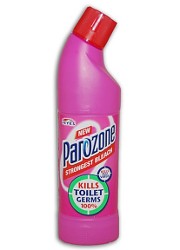 Inspired by clearing out of bathroom cupboards this morning, I thought we’d have a cleaning themed week here on Recycle This. We’ve covered various cleaning related things in the past – pump action spray bottles, washing powder packaging, “freshener” shakers and reducing the amount of cleaning products used – but there are still a few things we could think about reusing, recycling, upcycling & reducing.
Inspired by clearing out of bathroom cupboards this morning, I thought we’d have a cleaning themed week here on Recycle This. We’ve covered various cleaning related things in the past – pump action spray bottles, washing powder packaging, “freshener” shakers and reducing the amount of cleaning products used – but there are still a few things we could think about reusing, recycling, upcycling & reducing.


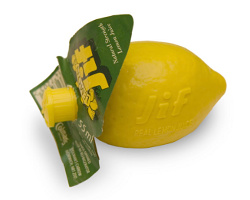 For some reason, our local supermarket has stopped selling lemon juice in sensible containers and only sells it in plastic lemon-shaped bottles now. (Not actually Jif lemons but similar, with a flat bottom.)
For some reason, our local supermarket has stopped selling lemon juice in sensible containers and only sells it in plastic lemon-shaped bottles now. (Not actually Jif lemons but similar, with a flat bottom.)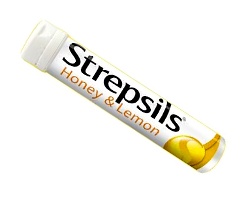 Hey team. Apologies for the lack of a post on Friday – I was ill with my second cold of 2011 (which, given it was only the 7th of Jan, I thought was pretty good/bad going. I’m in the constant coughing stage now, such fun.) I spent the whole day in bed wishing I could get a sinus transplant – only momentarily distracted by the new
Hey team. Apologies for the lack of a post on Friday – I was ill with my second cold of 2011 (which, given it was only the 7th of Jan, I thought was pretty good/bad going. I’m in the constant coughing stage now, such fun.) I spent the whole day in bed wishing I could get a sinus transplant – only momentarily distracted by the new 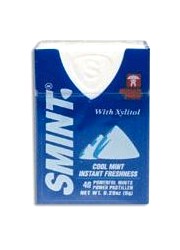 We’ve had an email from (not my) John:
We’ve had an email from (not my) John: Expanded polystyrene, the moulded white shapes you get as protective packaging when you buy electronics or large toys etc, is a pain to recycle – it can be recycled now but not many places collect it.
Expanded polystyrene, the moulded white shapes you get as protective packaging when you buy electronics or large toys etc, is a pain to recycle – it can be recycled now but not many places collect it.














